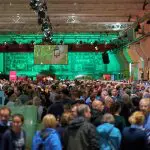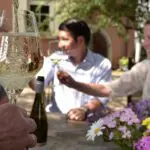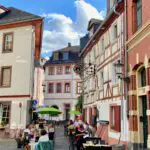I am mostly interested in German wine history. Still I had two very good reasons to pick up a book about the history of Champagne: a personal one, me being half French half German, with family in Champagne and numerous school holidays spent around Veuve Cliquot’s backyards.

From a professional point of view I am very keen on understanding the connecting elements of sparkling wine in the history of both of my home countries. How comes that so many famous Champagne houses have German names? How did Champagne influence German palates – and how comes Germany became (and still is) the world’s leading consumer of sparkling wines?
Don and Petie Kladstrup’s book ‘Champagne – How the World’s most glamorous wine triumphed over war and hard times’ looks like it has answers. What it for sure offers is a compelling run through Champagne’s history, with an enormous amount of details and anecdotes – presented in an easy-to-read manner that is transforming a history book into a page turner. We learn how Champagne evolved from a generic wine to the world famous sparkling wine that it is today; we learn about the struggles of vintners and the producing houses; about Champagnes famous ambassadors and about its lesser known heroes, too.
The sad historic relations between Germany and France – basically a continuous state of animosity and war in the period 1870 to 1945 – take much of the attention. It is covered in detail how Champagne, located directly between Paris and the German border, became battleground more than once and how that affected the livelihood of the Champenois. It doesn’t cover though, how close (and likely friendly) some of the German-French relationship in the wine business must have been before and between the wars. Many Germans worked in and with the big Champagne houses and still today many of the largest estates carry German names – Krug, Mumm, Pieper-Heidsieck, Deutz… to name just some. But here, the authors don’t provide any answers.
Kladstup’s narrative of the Champagne seems to end after WW2 – there are just few pages dedicated to the recent 75 years, possibly the most peaceful and prosperous of Champagne has ever seen, both as a region and as wine. Is that worth omitting? Possibly yes, in favor of a captivating storyline around war and crisis. In the epilogue the authors state: ‘[…] we had heard so many wonderful stories in Champagne, some heartwarming, others heartrending’ and from a journalist’s point of view peaceful times don’t produce headlines – or stories that is.
So, yes, to anyone interested in a good book on Champagne’s bloody past, this will be very satisfying. If you are interested in a comprehensive round up, including the more recent history, you may be left wanting.








